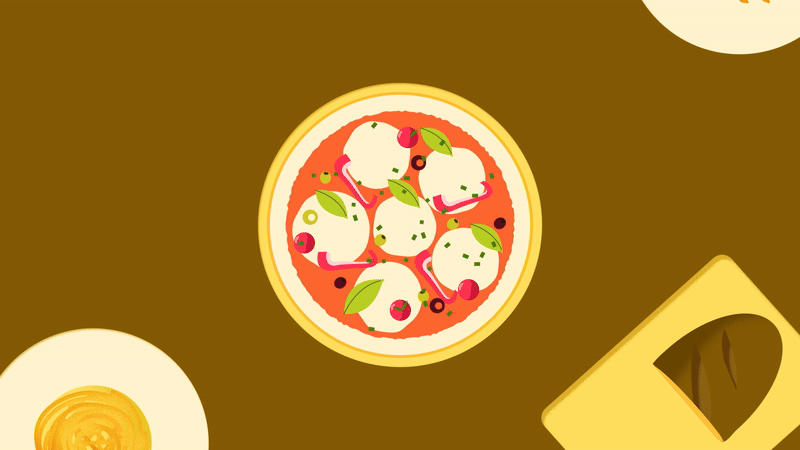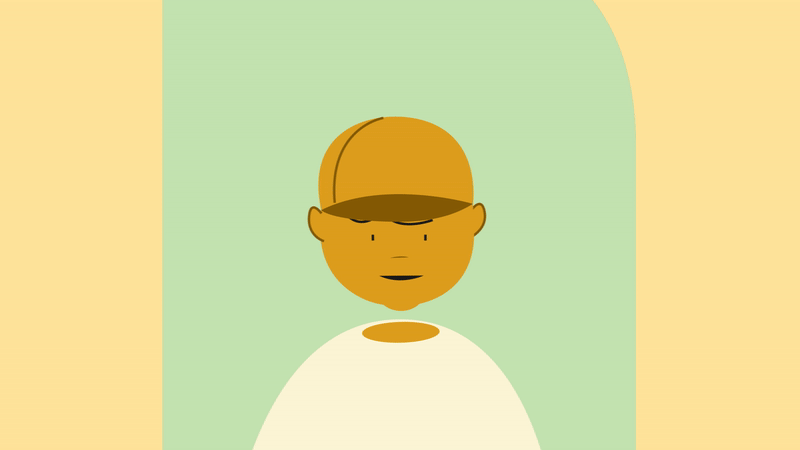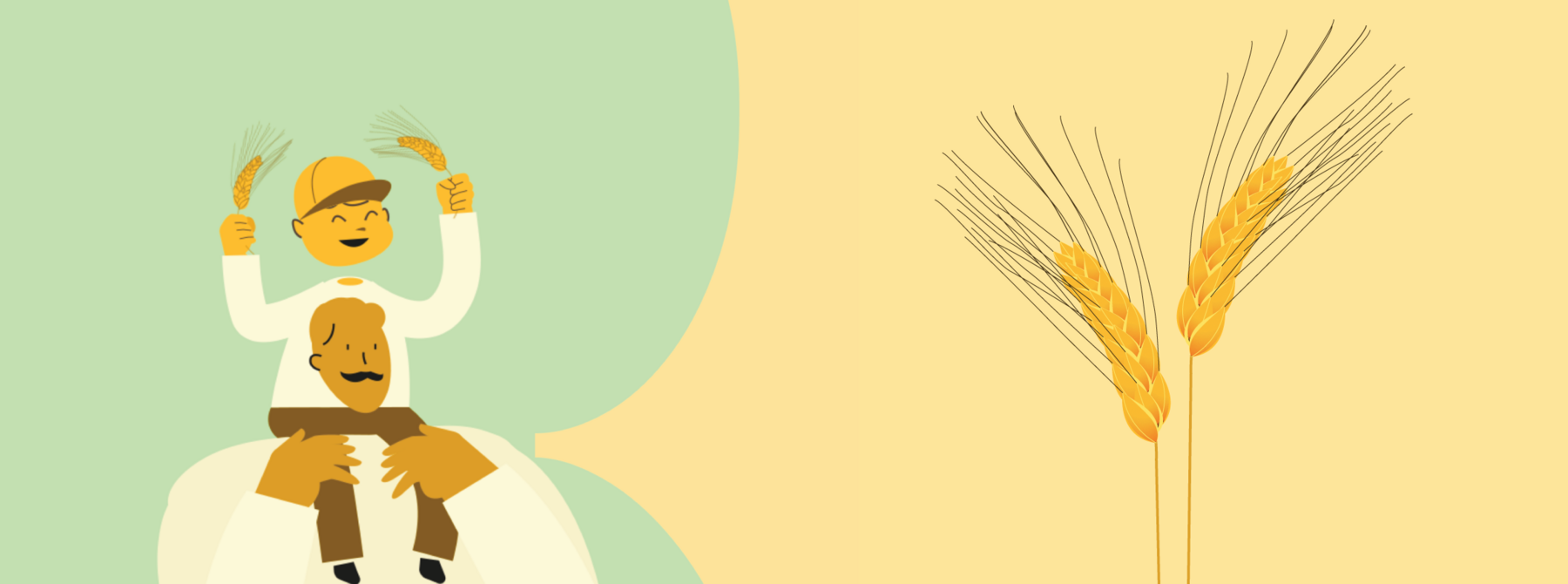CROP CHRONICLES: 18 July 2024
Bread wheat gets all the glory, second only to rice in how many calories it supplies to people’s diets each year. I’m just a drop in the ocean of the wheat harvest, around 5–8% of the total. But my wild ancestor was essential to the birth of bread wheat, and I am used to make some of the tastiest wheat products, like pasta and couscous. I’m also more nutritious than bread wheat.
I’m durum wheat, aka Triticum turgidum subsp. durum.
Durum is Latin for hard, and I am indeed hard, harder than even the famous hard red wheats that make super-fluffy bread possible. This is real physical hardness, not just a synonym for high-protein, and turning durum wheat into flour is much more laborious than for bread wheat. I get ground in highly specialized mills. Turgidum is also Latin, and means swollen. They call me that because my seeds are larger than those of bread wheat.
Us wheats have a very complicated history. We are all natural hybrids of wild species, selected over thousands of years by the farmers who grew us.
First, a wild wheat called Triticum urartu hybridised with a closely related weed called goatgrass, Aegilops speltoides. The hybrid seeds were fertile, a new species — Triticum turgidum — with two full sets of chromosomes, one from each parent. This was wild emmer.
Eventually people collected its ripe seeds and ground them up to make gruel and bread. Those wild seeds have a tendency to break loose from the ear, but sometimes a mutation results in a plant with seeds less likely to fall to the ground. Seeds that stuck to the ear made harvesting easier, and perhaps convinced people to plant the seeds, rather than depend on gathering them from the wild. Another mutation made it much easier to thresh the seeds from the protective layers around them, resulting in seeds that were easier to clean before grinding. That, about 9,000 years ago, somewhere in southern Turkey, is how I came about.

I have four sets of chromosomes. A further cross of wild emmer – my ancestor – with a different goat grass, Aegilops tauschii, produced bread wheat, Triticum aestivum, with its six sets of chromosomes. But bread wheat can tell its own story.
I’m durum wheat, I’m harder, I cope with drought better, I have larger seeds that contain more carotenoids, important for vitamin A, and more protein than bread wheat.
About that. I don’t just have more protein, it is slightly different in composition. That difference results in my dough being more extensible than bread wheat dough. You can roll it out thinner. Durum dough is also less elastic than bread wheat dough, so once you have rolled it out, it doesn’t shrink back. And that makes me ideal for all kinds of pasta, where the dough is rolled out or extruded into different shapes. My flour does make perfectly good bread, but it needs a bit more care and attention. Not just flat breads either. In Italy, for example, there’s a town called Altamura where they have been making delicious golden loaves from 100% durum flour for more than 2000 years.
Because I am more resistant to drought and fetch a price premium for my specialty products, I am often a good cash crop, most notably for small-scale farmers on marginal lands.

I’m not saying I don’t have any problems, though, for example with susceptibility to disease and, thanks to the climate emergency, ever more serious droughts. Normally, breeders would cross different parent lines to select new and improved varieties. However, farmers long ago put me through some pretty intense selection as they domesticated me. Without more diversity, breeders do not have the raw material they need to improve me.
My wild relatives, of course, have continued to evolve without the support of irrigation, fertilisers and pesticides and so still contain many genetic traits that I have lost. The problem is that making crosses between me and my wild relatives is not easy. To overcome that, breeders take any crosses that are successful and repeatedly cross them back to their durum wheat parent. The result is a hybrid line that contains mostly durum wheat genes with a small segment of DNA from the wild relative. Modern molecular analysis allows the breeder to be sure that the wild DNA contains the genes of interest.
One of the most recent successes of this approach is an exceedingly drought-resistant variety called Jabal. It emerged from a cross between cultivated durum and my ancient ancestor, the goatgrass Aegilops speltoides, that was collected on the dry plains of Syria. Between 2017 and 2021, trials of new durum varieties in Morocco were beset by more serious droughts than many farmers could remember, and yet the variety that became Jabal flourished and produced a harvest when all the existing commercial varieties failed.
I’m happy to have had some of the diversity I lost during domestication given back to me by my wild relatives, especially as it improves the lot of farmers facing the climate emergency. Looking further ahead, this approach holds out great hope.

Remember that other goatgrass, Aegilops tauschii, the one that went into making bread wheat? Researchers crossed it with me, cultivated durum, to create what they call synthetic bread wheats. These have six sets of chromosomes, like bread wheat, but because they have been made afresh, the genes they get from the goatgrass are likely to be different to the ones they got way back in the Stone Age. Along with the durum genes, breeders now have even more diversity from which to select better varieties of bread wheat. Synthetic wheats form a useful bridge between wild relatives and commercial varieties.
Genes have flowed the other way too, as breeders sought to soften my most distinguishing characteristic. The physical hardness of a wheat seed has absolutely nothing to do with its qualities for bread or pasta, but the need for specialised milling equipment does restrict the use of durum wheat. After about 20 years, breeders managed to select durum varieties with softer kernels, after identifying the gene in a Chinese bread wheat and crossing with commercial durum varieties. The new varieties tolerate drought and have all the other benefits of durum wheats, but produce high-quality flour more easily from the softer seeds. And the flour makes excellent pizza and pasta.
Soft durum wheat? I never thought that would be possible.
Did You Know?
-
Scientific names: Triticum turgidum subsp. durum
-
Origin: Fertile Crescent, Near East, ~9000 years BP
-
Conservation status: About 115,000 seed accessions in Genesys: 28,093 in the CIMMYT genebank in Mexico, 22,630 in the ICARDA genebank and 21,355 in the Australian Grains Genebank. The main donor countries are Turkey (12,594), Ethiopia (10,767), and Mexico (7,709). About 38,000 accessions are safety duplicated in the Svalbard Global Seed Vault, 30,413 in the USDA National Seed Storage Laboratory in Nebraska USA, and 10,833 in the CIMMYT genebank in Mexico.
This story is part of Crop Chronicles, a multimedia campaign that uncovers the stories of the crops that feed the world, the people who grow them and the race to adapt them to a changing climate.



